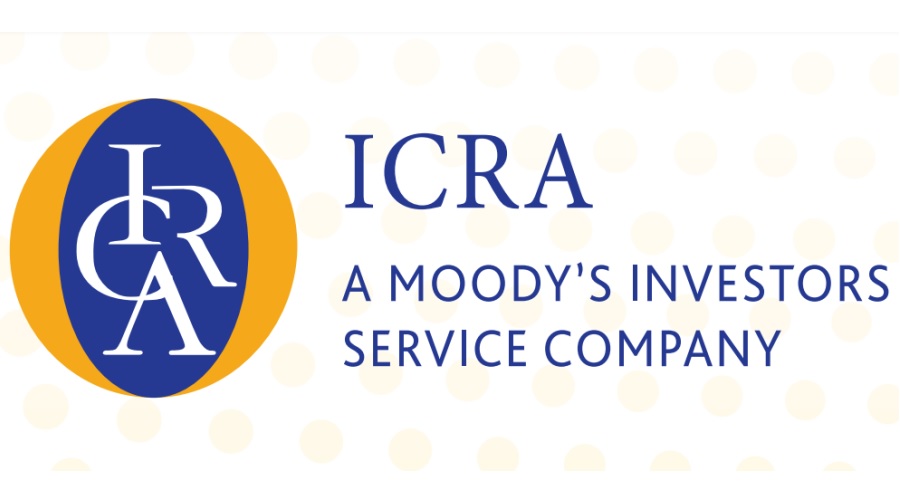 Heubach Colorants India Ltd Q2 FY2026 PAT at Rs. 16.28 crores
Heubach Colorants India Ltd Q2 FY2026 PAT at Rs. 16.28 crores Indiabulls Ltd Q2 FY2025-26 consolidated profit at Rs. 0.71 crore
Indiabulls Ltd Q2 FY2025-26 consolidated profit at Rs. 0.71 crore LKP Securities Ltd consolidated Q2FY26 PAT lower at Rs. 2.66 crore
LKP Securities Ltd consolidated Q2FY26 PAT lower at Rs. 2.66 crore NTPC Green Energy Ltd Signs MoU with CtrlS Datacenter Limited for development of RE Projects
NTPC Green Energy Ltd Signs MoU with CtrlS Datacenter Limited for development of RE Projects Lemon Tree Hotels signs 11th property in Punjab
Lemon Tree Hotels signs 11th property in Punjab
Research
Credit metrics steady for India Inc., even as exports face pressure: ICRA
Posted On : 2025-08-26 17:16:45( TIMEZONE : IST )

ICRA expects India Inc. to report modest YoY revenue growth of 5-6% in Q2 FY2026 (5.5% in Q1 FY2026), led by firm rural demand and structural factors like premiumisation and the expanding scale and scope of organised players. Coupled with softening of input costs like crude oil and coal, this will result in a steady OPM in the range of 18-18.2% on a YoY basis. As a result, the credit metrics of India Inc. in Q2 FY2026 is likely to remain largely stable with the interest coverage ratio at 4.9-5.1 times, against 4.9 times in Q1 FY2026.
Commenting on the trends, Kinjal Shah, Senior Vice President & Co-Group Head - Corporate Ratings, ICRA Limited, said: "The ongoing geopolitical tensions and steep US tariffs continue to impact demand sentiments, especially for export-oriented sectors such as agro-chemicals, textiles, auto and auto components, seafoods, cut and polished diamonds, and IT services. While domestic rural demand remains resilient, urban demand is yet to recover meaningfully. Despite tailwinds like income tax relief and easing food inflation, recovery in sentiments would be the key for pickup in urban demand. In that context, the expected GST rate cuts could provide some stimulus to demand."
While the struture of the proposed GST rationalisation is not yet certain, the prospects of lower prices may cause some discretionary purchases to be delayed from the second half of Q2 FY2026 to H2 FY2026, which could cause a blip in the demand momentummomentum in some sectors.
ICRA's analysis of the performance of 585 listed companies (excluding financial sector entities) in Q1 FY2026 revealed 5.5% YoY revenue growth, led by healthy demand in consumption-oriented sectors like consumer durables, retail, hotels, gems & jewellery and infrastructure-oriented sectors like capital goods, cement and construction, where Q1 FY2025 performance was muted due to the General Elections. Following a seasonally strong Q4 FY2025, the revenues of India Inc. declined sequentially by around 4.1% in Q1 FY2026, led primarily by sectors like real estate, construction, capital goods, hotels and airlines.
While the overall urban demand growth has been tepid over the past 18 months, premiumisation of consumption is apparent across several product categories - from automobiles to FMCG to watches. The product mix change is supporting headline revenue growth at a time when volume growth has been soft. Likewise, organised players in sectors like hospitality, hospitals, and jewellery retail are expanding their footprint through a mix of acquisitions and other commercial arrangements supporting overall revenue growth.
Corporate India reported a steady OPM of 18.1% in Q1 FY2026 (on a YoY basis). The margin expansion in sectors like telecom, cement and real estate was led by improved demand and operating leverage. However, this was partly offset by a margin contraction in auto, consumer durables and metals & mining due to lower realisations and/or higher input prices. Moreover, on a sequential basis, the margin declined by 28 bps, led by hotels, power and capital goods sectors on account of cost pressures and impact on demand due to early onset of the monsoons. The interest coverage ratio of ICRA's sample set of companies, adjusted for sectors with relatively lower debt levels (IT, FMCG and pharma), saw marginal YoY moderation to 4.9 times in Q1 FY2026 from 5.0 times in Q1 FY2025 as growth in operating profits was offset by an increase in the interest costs due to higher working capital requirements.
Given the uncertain global environment, ICRA expects the private capex cycle to get further delayed. However, certain sectors such as electronics, semi-conductors and niche segments within the automotive space like electric vehicles will continue to see a scale-up in investments. Further, Government capital expenditure is expected to support the overall investment activity, although the headroom for growth is likely to be lower in later quarters of this year, after the upfronting seen in Q1 FY2026.
